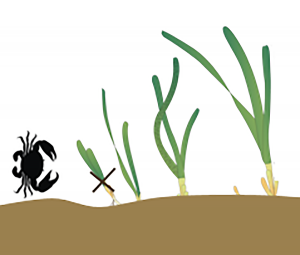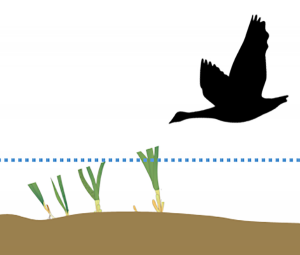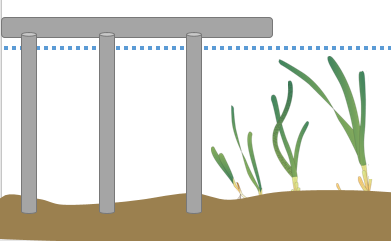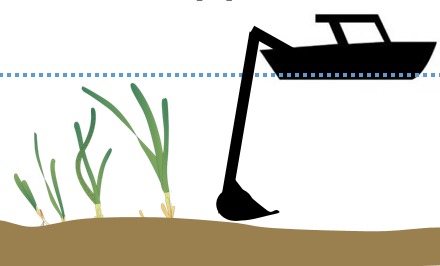There are a variety of physical, biological, and direct human factors that affect eelgrass growth in estuaries. We have partnered with researchers at Cal Poly and Cuesta College to better understand these conditions in Morro Bay. This blog series, Factors that Affect Eelgrass Growth in Morro Bay, highlights our partners’ research. This second post will introduce you to the biological conditions and human factors that can impact eelgrass in our estuary.
You can find the first post on physical conditions that affect eelgrass here.
Biological conditions
Disturbance caused by crabs

Crabs can disturb eelgrass blades by clipping them. However, this is not thought to be a driving factor for eelgrass loss or survival in Morro Bay. Dr. Lisa Needles at Cal Poly is researching the effects of crabs clipping eelgrass blades and overall crab abundances in Morro Bay.
Foraging by black brant geese

Black brant geese also forage on eelgrass blades during their winter visit to Morro Bay. In general, black brant graze only the top of the blades, which allows the plant to continue to grow. (Canada geese, however, sometimes pull out the entire eelgrass plant when foraging in other estuaries.) Dr. Jennifer O’Leary and students at Cal Poly have been monitoring black brant grazing locations and food resources.
For more information on black brant geese, read John Roser’s blog post, “Morro Bay’s Black Brant: Monitoring the Status of a Bay Icon.” He discusses observations and data gleaned from his twenty-year-plus research on these birds, their migration habits, and their declining numbers.
Direct human impacts
Shading

Like other plants and seaweeds, eelgrass needs sunlight to photosynthesize. Piers, docks, and other infrastructure can shade eelgrass, inhibiting its growth.
Dredging

Morro Bay is designated as a safe harbor; it is the only one between Santa Barbara to the south and Monterey Bay to the north. To ensure that it is navigable at all times, the Army Corps of Engineers dredges the harbor mouth and part of the navigation channel each year. The dredge can uproot eelgrass while it removes sediment from the channel, but the crew takes precautionary measures to avoid this disturbance. In cases where eelgrass is lost, it must be replanted in greater quantities than it was removed. The loss of eelgrass in Morro Bay has not been found to align with dredging operations.
Stay tuned in the new year as we post a series of blogs based on our partners’ research that explore these physical, biological, and human factors affecting eelgrass and what they might mean for the future of eelgrass in Morro Bay.
Help protect and restore the Morro Bay estuary
- Donate to the Estuary Program today and support our work in the field, the lab, and beyond.
The Estuary Program is a 501(c)3 nonprofit. We depend on funding from grants and generous donors to continue our work. - Support us by purchasing estuary-themed gear from ESTERO. This locally owned and operated company donates 20% of proceeds from its Estuary clothing line and 100% of Estuary decal proceeds to the Estuary Program. Thank you, ESTERO!
- Purchase items from the the Estuary Program’s store on Zazzle. Zazzle prints and ships your items, and the Estuary Program receives 10% of the proceeds. Choose from mugs, hats, t-shirts, and even fanny packs (they’re back!) with our fun Estuary Octopus design, our classic Estuary Program logo, or our Mutts for the Bay logo.
Thank you for your support!